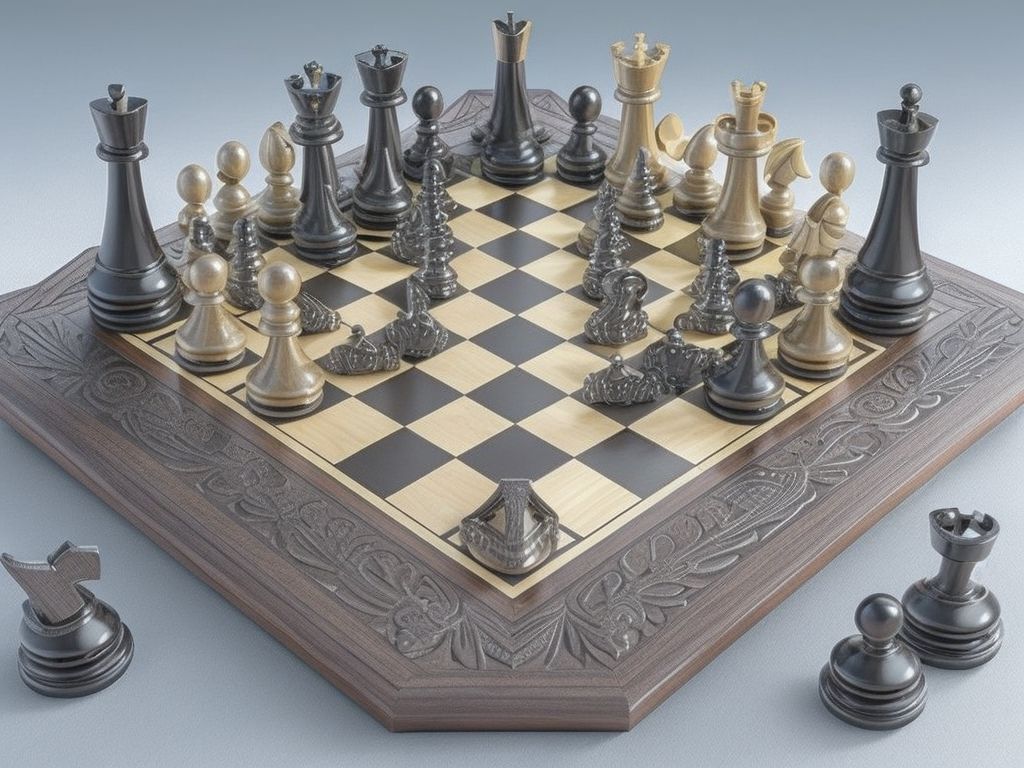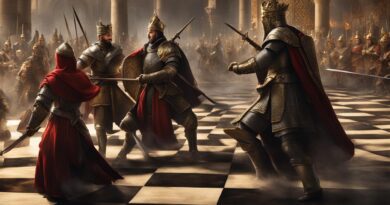How Do Chess Ratings Work
Chess, with its ancient roots and complex strategies, has delighted players for centuries. Ratings, a numerical representation of a player’s skill, reflect their progress in this remarkable game.
To determine these ratings, Elo rating is assigned to each player. This rate serves as a barometer of performance. A high rating means proficiency; a low one means room for improvement.
Factors like the difference in ratings between opponents, the number of games played, and the strength of opponents faced influence these numbers.
For earning a high chess rating, one should challenge higher-ranked opponents to gain experience and rating boosts. Engaging in well-matched contests and tournaments builds resilience and exposes players to diverse strategies.
Analyzing own games with critical scrutiny and taking guidance from experienced coaches are also useful approaches to improve performance.
What is a Chess Rating?
A chess rating is a number to show how good a player is at the game. It’s worked out by seeing how they do against other rated players. The more points they have, the better they are.
Chess ratings compare players and show their strengths. They’re used in tournaments to match up people of similar skill level. They can also show how someone is improving over time.
Calculations for chess ratings use clever algorithms. These take into account the ratings of opponents, the result of each game, and how many games were played. Elo and Glicko are two systems made specially for chess ratings.
Chess ratings aren’t fixed. They can move up or down after each game. If you beat a better player, your rating will go up. But if you lose to someone weaker, it will drop.
Pro Tip: To improve your rating, play against tougher opponents and study your games to see where you can get better.
How are Chess Ratings Calculated?
Chess ratings are calculated using a complex algorithm, which takes into account many factors. These include: performance, opponents’ ratings and the game result. The system used is called the Elo system, named after its creator Arpad Elo.
To better understand how chess ratings are calculated, let’s look at a table. It shows the main components:
| Factor | Description |
|---|---|
| Performance | How well a player does in a tournament |
| Opponents’ Rating | Strength of the player’s opponents |
| Game Result | Did the player win, lose or draw? |
These factors all interact in a complex way to determine a player’s rating. This system takes into account not only wins and losses, but also the opponents faced and overall performance. So, it gives an accurate picture of a player’s skill level.
In addition, chess ratings are constantly updated. Each game played, against stronger or weaker opponents, changes a player’s rating. This ensures that every match affects players’ rankings, based on their current abilities.
In 1970, Bobby Fischer made history with an astonishing Elo rating record of 2785. This highlighted the effectiveness of the Elo rating system and made him one of the greatest chess players of all time.
How to Obtain a Chess Rating?
To get a chess rating, do these five steps:
- Join a legit chess federation.
- Play players of all levels in rated tournaments.
- Keep track of your performance over time to get a rating history.
- Your rating is based on your performance against rated players.
- Your rating changes when you win or lose against players of different levels.
Know the rules of the federation you join. Understand how your rating is calculated.
To better your rating, take advice from experienced players. Learn strategies. Practice. Analyze your games to improve.
Pro Tip: Getting a top-tier rating takes dedication, perseverance, and improvement. Play stronger players to level up your skills and rating.
Understanding Rating Changes
To understand rating changes in chess, many factors must be considered. Such as: opponent skill, player performance, and rating gap between opponents. This can be seen through a table:
| Opponent’s Rating | Player’s Rating | Result | Rating Change |
|---|---|---|---|
| 1800 | 1600 | Win | +10 |
| 2000 | 2100 | Loss | -8 |
| 1700 | 1750 | Draw | -2 |
From the table, we can observe that a lower-rated player beating a higher-rated player will result in a large rating boost. On the other hand, losing to a lower-rated player may cause a significant decrease.
It’s important to note that higher-rated players will experience smaller rating changes against similarly-rated players. This is because their ratings are more established and the outcomes are more predictable.
Considering this, here are some tips:
- Be consistent: To maintain your rating, stay consistent.
- Choose balanced opponents: Play against people whose ratings match yours.
- Analyse losses: Learn from losses against lower-rated opponents.
- Play higher-rated players: To gain experience and potential rating boosts.
By following these steps, players can stay steady in the chess rating world, while also growing and learning.
What Does a Chess Rating Represent?
A chess rating is a measure of a player’s skill level. It’s based on their results in games against other rated players. Here are 6 key points about what a rating means:
- It shows how a player does against different types of opponents.
- It reflects how consistent a player is over time.
- A higher rating suggests a stronger player.
- A lower rating suggests a weaker player.
- It allows players to track progress and set goals.
- It’s used to make sure players of similar strength are matched.
Also, ratings are not absolute. They can change based on recent performance. Different countries use different systems, but they’re connected.
Remember: Winning or losing games doesn’t determine your rating. Consistency and improvement do. To improve your rating, focus on learning from your defeats. Analyze games objectively and work on strategies. With time, your rating will reflect your growth as a chess player.
Conclusion
To grasp chess ratings, we must comprehend the complexities that go into calculating a player’s proficiency. Various factors, such as their results in prior games and their adversaries’ strength, are taken into consideration. Through intensive computations and data analysis, the player is granted a numerical rating which ranks them among others.
Notably, chess ratings can significantly change depending on a player’s performance. A victory against a higher-rated adversary could lead to a great rise in one’s rating, while defeat against a lower-rated opponent would have an opposite effect. This dynamism encourages players to stay challenged and motivated to improve.
Let me tell you a gripping story about the influence of chess ratings. Two grandmasters with similar ratings were facing each other in a long-awaited tournament. This match could potentially decide their standing in the chess community. As the game went on, people watched with excitement admiring the mental strength and strategic skills of these board masters. In the end, after a few hours of hard battle, one of them won, surpassing their adversary by only few points but leaving a lasting mark in the annals of chess ratings.
Chess ratings reflect not only a player’s past performances but also spur them on to become better. With each move over the board, chess players not only strive to outsmart their opponents but make an imprint on the ever-changing world of chess ratings.

